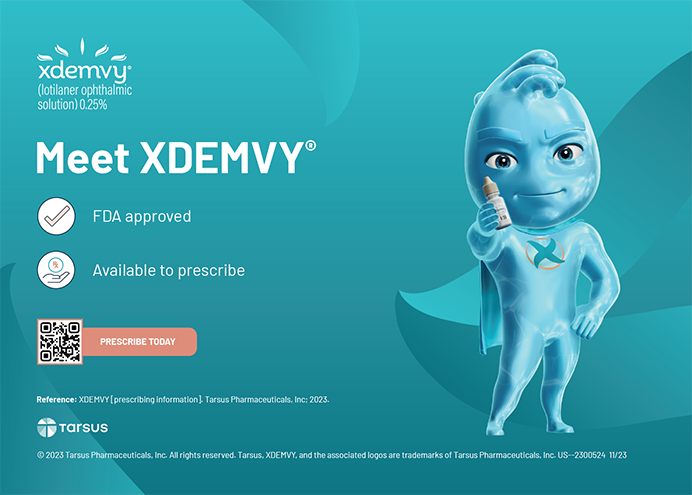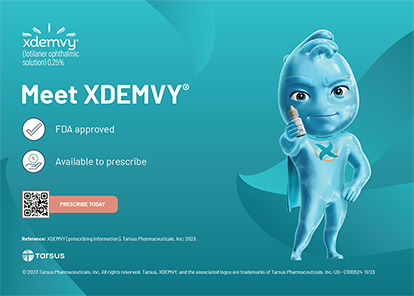Ophthalmic practices across the US are deciding whether they will offer their patients presbyopia- and astigmatism-correcting IOLs (what I call lifestyle IOLs). This decision, however, is more complicated than offering a new monofocal lens. Practices must choose whether or not they will participate in the next wave of ophthalmology?elective vision. When people choose to invest their own money in a medical procedure, they expect the experience and benefits to be quite different from what they have received from traditional insurance-covered care. They demand better service from the staff, greater participation from the surgeon, and full disclosure of their treatment options. If you wish to build a lifestyle IOL service line in your practice, you will also need to adjust the delivery of this service, as the following information describes.
EXPLAINING LIFESTYLE IOLS
Who Communicates to Patients
As a consultant for ophthalmic practices, I instruct providers to divide their staff into two teams: an Experience team and a Clinical team. The Experience team manages the entire occurrence from phone call to final visit postoperatively. The Clinical team manages the testing, diagnosis, and treatment of a patient's medical condition. I train the Experience and Clinical teams to communicate identically about new-technology lenses. They tell patients that lifestyle IOLs are advanced-technology implants that improve visual range and quality beyond the level possible with old-style cataract implants. Increasingly, the measure of performance in this category is the percentage of time spent enjoying glasses-free vision.
How to Communicate to Patients
Over time, staff members may unwittingly adopt "surgeon-speak," using unfriendly, clinical terms and emphasizing the science rather than the patient benefit of the IOL technology. Your staff should be able to clearly explain the advantages of each of the three premium IOL categories: aspheric, toric, and presbyopia-correcting. They should keep in mind that people choose lifestyle IOLs to reduce their dependence on glasses. Following are sample descriptions that all staff members can use to explain lifestyle IOLs to prospective patients:
Aspheric: There are new high-definition lenses that give better visual quality than what was available even a few years ago. These lenses strengthen your distance vision, as objects will be brighter, clearer, and sharper, but you will still need glasses for almost all intermediate and near tasks.
Toric: We now have lenses that correct astigmatism, which, as you know, has been difficult and costly to adjust in your eyeglasses prescription. We can now correct astigmatism with a lens implant that will sharpen your distance vision without glasses. The lens will improve your midrange vision to a certain degree, but you will still need glasses for up-close work or reading.
Multifocal or accommodating: The best lenses available to give you a complete range of glasses-free vision are called presbyopia-correcting lenses. These lenses improve distance, near, and midrange vision. Virtually all of our patients find that they are glasses-free for the majority of their day with these lenses.
I believe it is the responsibility of the surgeon, not the staff, to discuss the procedure's risks or negative aspects. The staff should remain focused on hope?what the patient hopes to achieve and what the staff hopes to deliver with lifestyle IOLs (Figure 1).
FRONT DESK RESPONSIBILITY
Your front desk and scheduling personnel have three tasks: (1) schedule the right patient into the right appointment; (2) provide educational materials in advance of this appointment; and (3) ensure the Vision Preferences Checklist (see Figure 1 in Either/Or: Add Structure to the Lifestyle IOL Conversation on page 55 of this issue) is completed before the workup. Scheduling the likely cataract patient into the correct appointment period requires a cataract evaluation (Cat Eval) slot on your scheduling template and requires your appointment schedulers to ask four qualifying questions to discover potential cataract patients:
- Have you ever had cataract surgery? (If the answer is yes, the patient is scheduled into an Annual Exam slot, rather than into a Cat Eval slot.)
- Have you been diagnosed with a cataract? (If the answer is yes, the patient is scheduled into the Cat Eval slot.)
- May I ask how old you are? (If the patient is over 55 with vision changes consistent with a cataract, the patient is scheduled into the Cat Eval slot.)
- What recent changes are you noticing in your vision? (If the patient describes night vision trouble, recent prescription changes, or blurred or double vision, the patient is scheduled into the Cat Eval slot.)
Before patients visit our office, a staff member mails them information that discusses cataract surgery and lens implant options. The goal in mailing information before the examination is to shift patients' focus from fear concerning the changes in their vision to excitement about solving their visual problems. Cataract surgery details, lens implant options, frequently asked questions, fees, and the Vision Preferences Checklist should all be included in this mailing.
TECHNICIANS' ROLE DURING THE WORKUP
Technicians have three duties while assisting with cataract patients:
- Complete all testing so the surgeon can make an accurate diagnosis and recommend treatment without requiring a second patient visit.
- Delve into the patient's personality, goals, and desires to assess psychological fit with the procedure?subjectively assessing flexibility, adaptability, and degree of perfectionism. Technicians should review the Vision Preferences Checklist in advance of the workup and explore any areas of concern that the surgeon should be made aware of.
- Play a lifestyle IOL testimonial video while the patient's eyes dilate. Do not leave the video running on a loop. Turn the video on for the patient and any family members on a TV screen in the sub-wait, on a computer in the lane, or on a DVD player with headphones. Playing a video for a particular patient is more personal than leaving a video running.
YOUR ROLE AS SURGEON
The surgeon's role in discussing lifestyle IOLs is covered in detail in the companion article Either/Or: Add Structure to the Lifestyle IOL Conversation on page 55 of this issue. To summarize briefly, the surgeon should diagnose the cataract and recommend whether surgery is appropriate at this time. Then, the surgeon should assess the patient's vision expectations and make a specific recommendation for a premium refractive IOL. In both cases, the surgeon must give the patient time to agree with the recommendation before scheduling surgery. The surgeon should remind the patient of the upgrade fee and then hand him or her off directly to the surgery scheduler. This handoff should include instructions on activities to be scheduled; for example: "Mrs. Smith is ready to proceed with cataract surgery. She prefers a December date, and we'll be implanting the ReSTOR lens in her right eye."
ROLE OF THE SURGERY SCHEDULER
The surgical scheduler is responsible for finalizing a surgery date on the ambulatory surgical center calendar, finalizing informed consent, medical clearance and additional testing, and reviewing fees. The most successful lifestyle IOL practices do not leave the closing of lens surgery (either the patient's agreement to surgery or lens selection) to the scheduler. Rather, the patient and surgeon agree, and the scheduler facilitates the next steps in the process.
To become a successful lifestyle IOL practice, each team member must perform his or her role. The staff must ensure that patient education is spread throughout the entire patient encounter, from the initial phone call through the final postoperative visit, for optimal results with these lenses.
Kay Coulson is the founder of Elective Medical Marketing in Boulder, CO, and assists surgeons in growing their elective vision service lines. She may be reached at (303) 994-0014; kay@electivemed.com.


